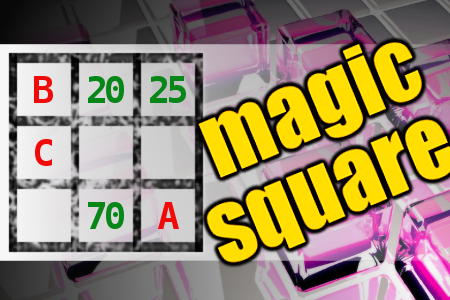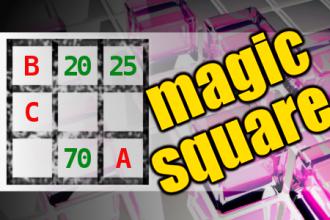MAGIC SQUARE: Calculate A*B*C
The aim is to place the some numbers from the list (16, 17, 19, 20, 25, 28, 60, 61, 62, 70) into the empty squares and squares marked with A, B an C. Sum of each row and column should be equal. All the numbers of the magic square must be different. Find values for A, B, and C. Solution is A*B*C.
A traveling salesman's car breaks down way...
Luckily he's not too far from a quaint little farmhouse, so he goes and knocks on the door. The farmer and his wife answer the door, quite sympathetic to the salesman's plight.
They let him use their phone to call a tow company. Unfortunately the truck couldn't come out until morning, so the couple offer to let him stay with them overnight. They don't have a guest room, but their bed is large enough to fit three comfortably, so the salesman accepts gratefully.
A couple hours after going to bed, the wife turns to the salesman and whispers, "I want you!"
He answers, "But your husband is right there!"
She replies, "Pluck a hair from his butt. If he doesn't wake up, we can do it."
He plucks a hair; the farmer doesn't stir, and they quietly have sex.
A couple hours later, she says "I want you again!"
He plucks another hair from the farmer's butt, getting no reaction, so they have sex again.
Another couple hours later, she says, "I want you one last time before you go!"
And as the salesman reaches to pluck a hair, the farmer tiredly says, "Look, man, I don't mind if you do my wife, but could you please stop using my ass as a scoreboard?"

